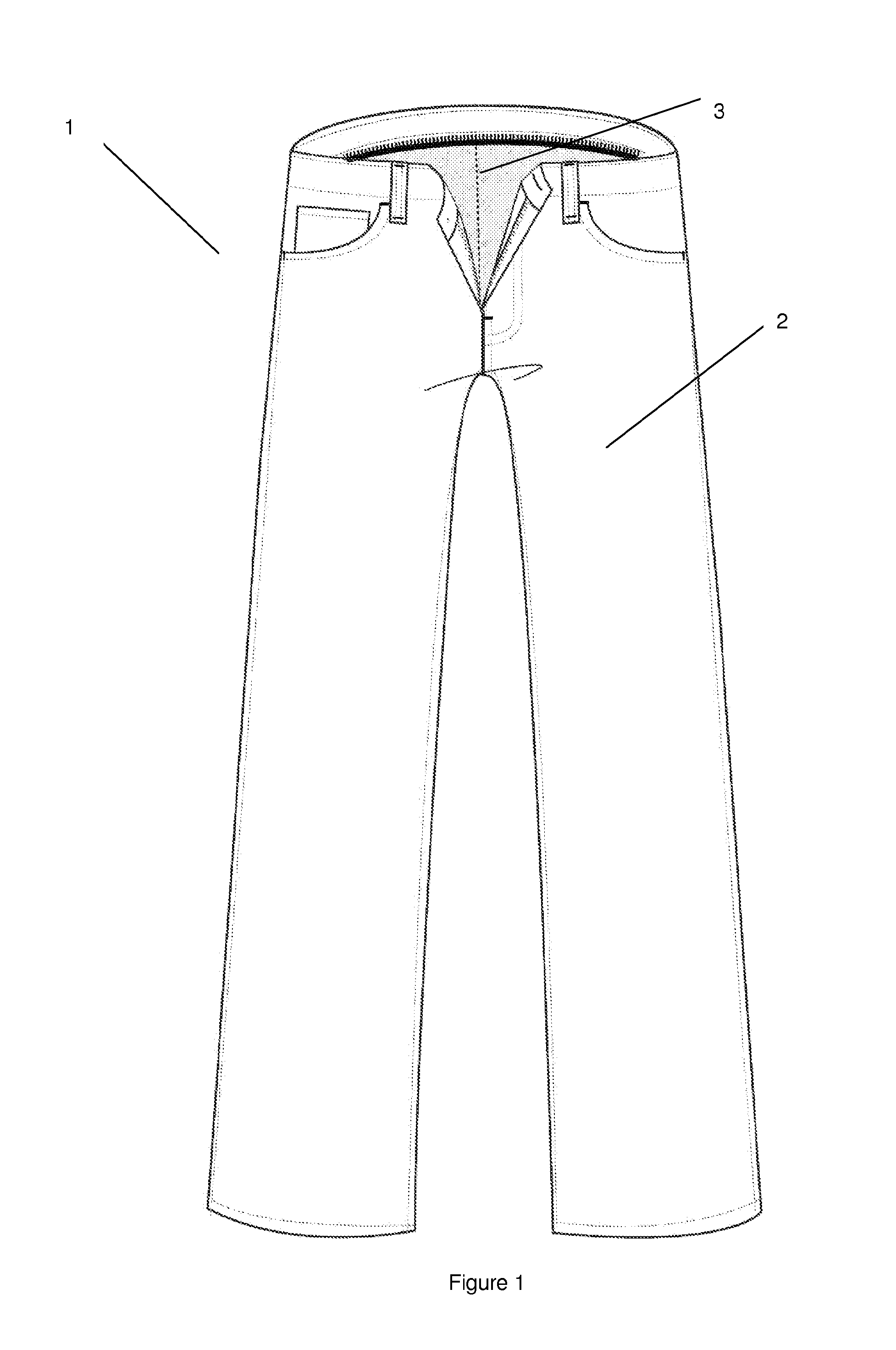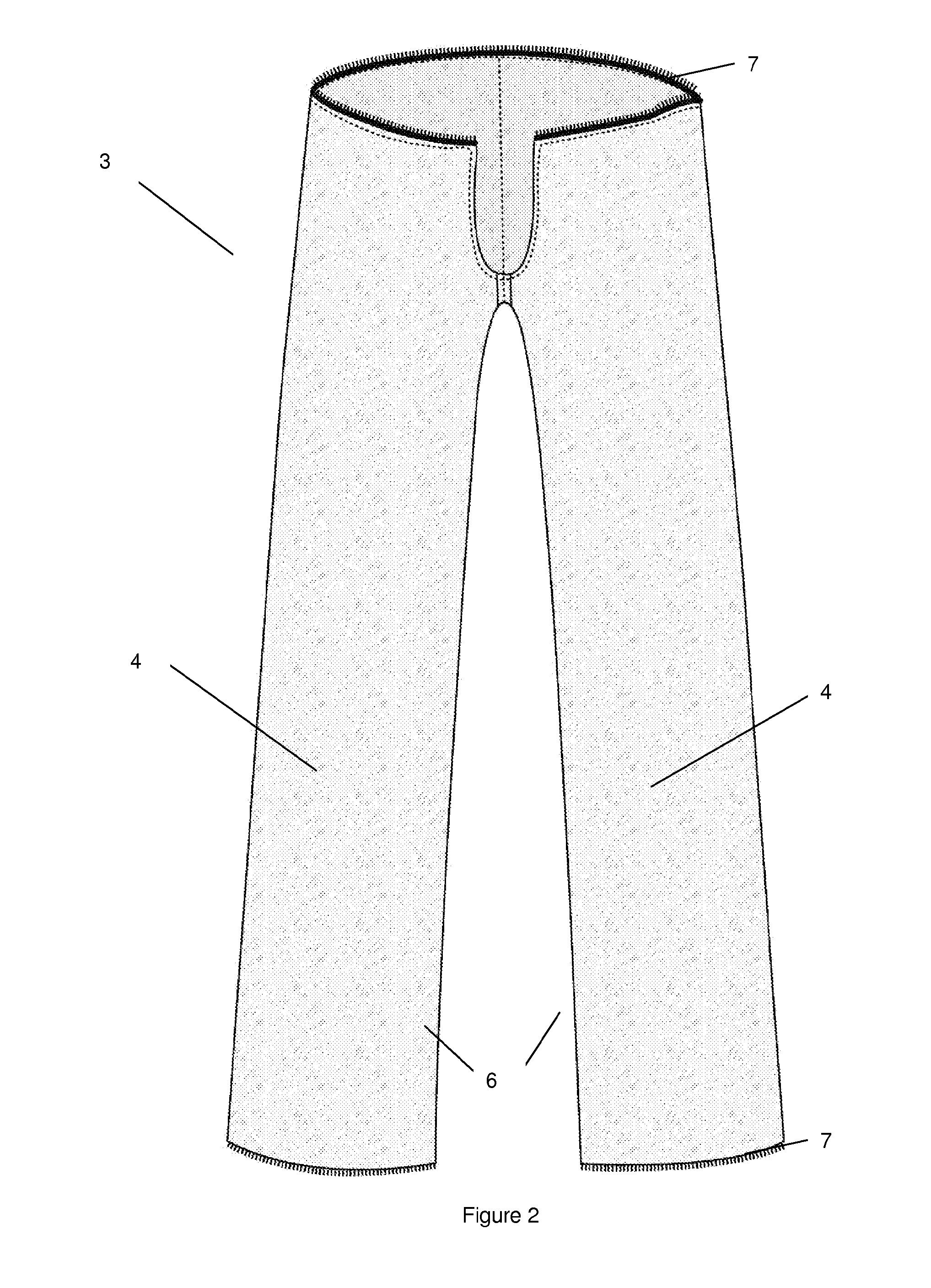Protective Garment
a protective garment and garment technology, applied in the direction of gaiters, spats, nuclear elements, etc., can solve the problems of not being seen as fashionable, motorcycles and scooters do not offer much protection, and significant injury can occur if a rider falls off, so as to reduce the effectiveness of the kevlar® layer
- Summary
- Abstract
- Description
- Claims
- Application Information
AI Technical Summary
Benefits of technology
Problems solved by technology
Method used
Image
Examples
Embodiment Construction
[0034]The present invention will now be described with reference to a preferred embodiment where FIG. 1 shows a protective garment in the form a conventional of a pair of trousers or jeans 1 having an outer layer 2 made of material, usually fashion material such as denim, and a protective inner layer 3. The protective inner layer 3 lines substantially the whole of the inside of the trousers 1. The inner layer is secured to the outer layer only at corresponding edges of the inner and outer layers which occur at openings of the garment.
[0035]FIG. 2 shows a front view of the inner protective layer 3 of the pair of trousers. In a preferred embodiment the inner layer of the trousers is made from abrasion resistant material including a light weight, strong para-aramid synthetic fibre, such as Kevlar®. The para-aramid synthetic fibre is treated with needles on one side, making that side much smoother and softer than the regular Kevlar®. This is referred to as brushed Kevlar®. Therefore whe...
PUM
 Login to View More
Login to View More Abstract
Description
Claims
Application Information
 Login to View More
Login to View More - R&D
- Intellectual Property
- Life Sciences
- Materials
- Tech Scout
- Unparalleled Data Quality
- Higher Quality Content
- 60% Fewer Hallucinations
Browse by: Latest US Patents, China's latest patents, Technical Efficacy Thesaurus, Application Domain, Technology Topic, Popular Technical Reports.
© 2025 PatSnap. All rights reserved.Legal|Privacy policy|Modern Slavery Act Transparency Statement|Sitemap|About US| Contact US: help@patsnap.com



